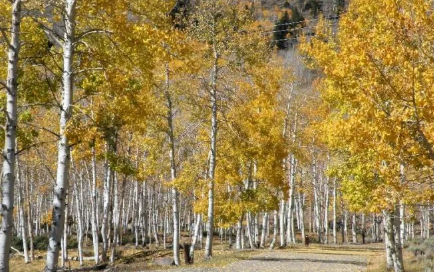Pando: World’s Oldest Living Organism
Pando is a remarkable clonal colony of quaking aspen trees in Utah, which spans 106 acres and consists of around 47,000 individual trees. Pando is connected by an extensive underground root system, making it a single organism rather than a forest. This unique structure has captivated scientists and nature lovers alike.
Origins and Age
Pando may have originated from a single seedling sprouting 34,000 years ago. Some estimates suggest it could be even older, potentially existing for up to 80,000 years. This makes Pando one of the oldest living organisms on Earth.
Genetic Identity
Genetic Research Findings
The research team found that spatial proximity does not guarantee genetic similarity. Trees close together share slightly more mutations, but the correlation is weak. This complexity adds depth to our understanding of Pando’s genetic structure.
Ecological Importance
Pando plays a vital role in its ecosystem, which provides habitat and food for various wildlife, including insects, birds, deer, and elk. The interconnected root system stabilises soil, preventing erosion and supporting environmental health.
Threats to Survival
Pando faces threats from climate change and human activities. About its resilience is crucial for its preservation. Additional studies on its ecological contributions are urgent to protect this ancient organism.
Competitors for Longevity
Other clonal organisms may rival Pando’s age. For instance, Posidonia oceanica seagrass off Formentera could be over 200,000 years old. Ongoing research into these organisms may reveal more about longevity in nature.
Preservation Efforts
Efforts to study and preserve Pando are critical. Protecting its legacy helps maintain the delicate balance of the surrounding ecosystem. About its survival strategies can inform conservation efforts for similar organisms.
Important Facts for Exams:
- Pando: Pando is a clonal colony of quaking aspen trees in Utah. It spans 106 acres and consists of around 47,000 individual trees connected by an extensive root system.
- Posidonia oceanica: Posidonia oceanica is a seagrass species found off the Spanish island of Formentera. Some estimates suggest it could be over 200,000 years old making it a competitor to Pando.
- Rozenn Pineau: Rozenn Pineau is a researcher from the University of Chicago. She led a team studying Pando’s genetic structure. Their findings revealed unexpected complexities in genetic similarities among trees.
- Quaking Aspen: Quaking aspen trees belong to the species Populus tremuloides. They are known for their stunning golden foliage in autumn. These trees can reproduce asexually through cloning via their extensive root systems.
Month: Current Affairs - November, 2024
Category: Environment Current Affairs


